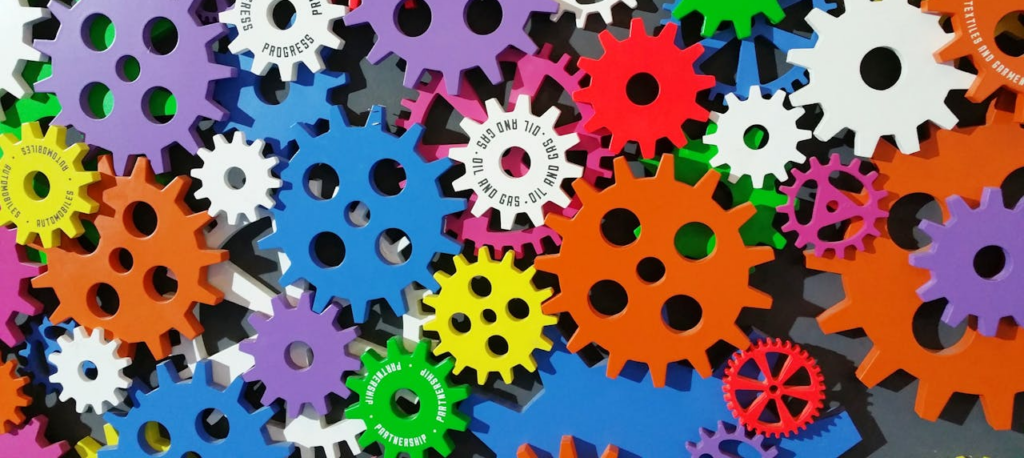Software development is integral to our daily lives in an increasingly digital world. Software is everywhere, from the apps that connect us to friends and family to the systems that power our work and leisure. Software testing is a vital stage of the software development life cycle; it ensures that our digital tools are reliable, functional, and user-friendly.
However, just as we are increasingly aware of the environmental impact of our everyday actions, we should also consider the environmental impact of our digital activities.
It might be easy to overlook the environmental cost of software testing. After all, it happens in the intangible digital world, invisible to most. But this process, like all human activities, does indeed have an environmental impact.
In this month’s Testing Times, I explore the environmental implications of software testing and look at eight ways we can shape a greener future in the digital world. Will this solve the world’s problems? Of course not, but every little helps.
Impacts of Software Testing on Energy Consumption and The Environment
Behind software testing, there hides a few unseen environmental impacts:
- Nightly automation test sets, often executed just because we can, can be unnecessary and consume energy.
- Producing the devices (PCs, servers, mobiles, tablets, monitors, etc.) used to test, from raw material extraction to manufacturing.
- E-waste when these devices reach their end of life can cause significant environmental harm if not properly recycled.
- Intensive and consistent software testing can mean that hardware wears out faster, and you must replace it more frequently. Offices and data centres construction, running and maintenance produce waste while requiring building materials and energy.
- Cloud-based or distributed testing involves considerable data transfer over the Internet. The data centres, servers, routers, and end-user systems consume energy.
Eight Mitigation Strategies to Help Reduce the Environmental Impact of Software Testing
The impacts, though significant, are not inevitable. Here are some ways the software testing process can become more eco-friendly and ensure that your live solutions are as environmentally friendly as possible:
1. Test Smart
Adopting a Test Smart approach is the easiest way to reduce energy consumption in the testing process.
Strategically planning and executing tests will utilise fewer resources. Focus on essential and relevant tests rather than running exhaustive and redundant tests at every phase.
You reduce energy consumption and wear and tear by cutting down on unnecessary or repetitive tests, leading to energy savings, particularly in large-scale or continuous integration environments.
2. Test Automation
Test automation can significantly reduce the environmental impact of software testing.
Automated tests typically run faster than manual tests. As a result, servers and workstations are active for shorter periods, consuming less electricity.
Automation also reduces the likelihood of human error in the testing process. Fewer errors mean fewer reworks and reruns, thus saving energy that you would use in repeated testing cycles.
Automation allows your tests to be scheduled during off-peak hours, a strategy we cover below.
3. Implement Performance Engineering
Performance engineering significantly enhances the green potential of your application software.
Performance engineering defines performance criteria early, builds solutions with performance in mind, and assesses performance throughout a project and into live. This approach can significantly reduce the environmental impact of your software through every stage of the SDLC and into production.
It achieves this by right-sizing your infrastructure and solutions, developing applications that use fewer resources, helping you avoid over-provisioning servers, curbing unnecessary energy expenditure and saving you money.
Performance engineering ensures that increased software activity does not always require a proportional increase in hardware resources, leading to reduced energy consumption.
Finally, continuous software performance monitoring of live applications allows you to identify and rectify inefficiencies, reducing resource use over time and lowering environmental impact.
4. Adopt Energy-Efficient Testing
Time matters when it comes to energy consumption.
Modifying software testing practices to make them more energy-efficient is a potent way to reduce environmental impact. This process doesn’t just protect our planet – it can also lead to significant cost savings.
By scheduling software tests for off-peak hours, we can utilise electricity when demand – and therefore the strain on power stations – is lower. Plus, off-peak electricity rates are lower in many places, offering potential cost savings.
The type of hardware used in software testing significantly affects energy consumption.
When it’s time to replace your old kit, investing in energy-efficient hardware can reduce energy usage. More efficient hardware will have a better performance-to-power ratio.
5. Increase The Use of Virtual Machines
The beauty of virtualisation lies in its efficiency.
As the software industry continues to evolve, the traditional hardware-based approach to testing is giving way to more sustainable alternatives. Virtualisation is a standout technique that significantly reduces electronic waste and energy consumption.
Virtual machines allow us to simulate the hardware or operating systems required for testing. You can conduct comprehensive tests without needing extensive physical resources.
We can run multiple instances on a single physical server by creating a virtual testing environment and drastically reducing the number of servers needed, lowering the energy required for running and cooling these servers.
Virtualisation reduces energy consumption and helps combat the rising problem of electronic waste, which I’ll come to shortly.
6. Perform Cloud-Based Testing
As we look at the broader virtualisation landscape, the role of cloud-based testing is worth noting.
We can run multiple tests concurrently on the same physical server by hosting virtual servers in the cloud. Plus, you only use public-cloud-based solutions during test execution; you then release them for use by someone else.
Because you never need to provision physical servers, this further reduces hardware requirements and energy usage whilst offering the added benefits of scalability and flexibility. Furthermore, cloud providers often use modern, efficient data centres, which can significantly reduce energy consumption.
Linking to point 5 above, you can think of virtualisation as ride-sharing on your daily commute to work; it is more efficient, but someone still needs to buy a car. In comparison, cloud-based virtualisation is the equivalent of a highly efficient public transport system.
Cloud-based testing does, of course, increase the amount of energy consumed in data transfer – but this is more than offset by the efficiency savings.
7. Use Data Centres Powered by Renewable Energy
Data centres are at the heart of modern cloud computing and are massive energy consumers.
Typically, data centres draw their energy from the grid, much of which is still generated using fossil fuels. Transitioning to data centres powered by renewable energy can dramatically shrink their carbon footprint.
This reliance contributes to greenhouse gas emissions and climate change. However, by switching to renewable energy sources like solar, wind, and hydropower, data centres can run on cleaner energy, significantly reducing their environmental impact.
Prominent tech companies have already begun this transition, setting an example for the rest of the industry.
Their actions show that this shift is possible and beneficial from both an environmental and business perspective, with many regions offering incentives for companies that adopt renewable energy, such as tax credits and grants.
8. Introduce E-Waste Management
Electronic waste, or e-waste, is one of the fastest-growing waste streams in the world.
In software testing, e-waste can come from outdated servers, computers, and other hardware components.
If not managed properly, these items can leach harmful materials like lead and mercury into the environment, posing severe health and environmental risks.
To mitigate these risks, you must dispose of e-waste correctly and recycle it where possible.
By ensuring obsolete hardware is either repurposed, dismantled for parts, or responsibly recycled, we can prevent these harmful materials from entering the environment. Additionally, recycling allows precious materials, like gold and copper, to be recovered and reused, reducing the demand for new raw materials.
For companies involved in software testing, adopting responsible e-waste management policies should be a priority.
These policies could include guidelines for correctly disposing of or recycling electronic equipment and training employees on these procedures.
Moreover, companies should aim to minimise e-waste generation in the first place by choosing devices with longer lifespans or opting for virtualisation to reduce the need for physical resources.
In Summary: Software Testing Has Several Environmental Impacts, But We Can Reduce Them
Software testing, while critical to the success of any software product, does carry environmental implications.
We’ve seen how software testing, this seemingly abstract process, affects our planet in many ways. From energy consumption to the carbon footprint of software test consultants. From e-waste to the impacts of internet usage.
The news is not entirely bleak. Just as there are steps we can take to reduce our environmental footprint, you can implement effective strategies to make software testing greener. By recognising and actively working to mitigate these impacts, software companies can contribute to a greener, more sustainable future.
We must remember that every bit counts regarding conservation; the digital world is no exception.


















